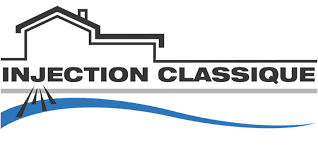Laptop repair can be a complex task, but understanding the basics can help you diagnose and resolve common issues. Whether you’re dealing with hardware malfunctions, software glitches, or connectivity problems, this guide will provide an overview of how to approach laptop repair effectively.
Diagnosing the Issue of your PC
Before you start any repair work, it’s crucial to diagnose the problem accurately. Here are some common issues and their potential causes:
- Power Issues: If your laptop won’t turn on, check if it’s a power issue. Ensure the power adapter is connected properly and the charging port is not damaged. Sometimes, a faulty battery can prevent the laptop from booting, so consider testing with a different battery if possible.
- Overheating: Overheating can cause your laptop to shut down unexpectedly. This could be due to dust accumulation in the cooling vents or a malfunctioning fan. Ensure the vents are clear and the fan is working properly.
- Slow Performance: A laptop that runs slowly might have too many programs running at once, insufficient RAM, or a full hard drive. Additionally, malware or fragmented files can also slow down performance.
- Screen Issues: If the screen is flickering or not displaying correctly, the problem could be with the display itself, the graphics card, or the connections between them.
- Keyboard and Trackpad Problems: Unresponsive keys or trackpad issues could stem from dirt or debris, driver problems, or physical damage.
Basic computer Repair Techniques
1. Power Issues:
- Check the Power Adapter and Cable: Inspect the power adapter and cable for any visible damage. Try using a different power adapter if available to see if that resolves the issue.
- Reset the Battery: For laptops with removable batteries, take out the battery, hold the power button for 30 seconds, then reinsert the battery and try powering on the laptop.
- Inspect the Charging Port: Look for any damage or debris in the charging port. If it appears loose or damaged, it might need to be repaired or replaced.
2. Overheating:
- Clean the Vents: Use compressed air to blow dust out of the cooling vents. This can significantly improve airflow and reduce overheating.
- Check the Fan: Ensure the cooling fan is spinning freely. If it’s not, it may need to be cleaned or replaced.
- Apply Thermal Paste: If you’re comfortable with more advanced repairs from klimka computer solutions then consider reapplying thermal paste between the CPU and its heat sink, which can improve cooling efficiency.
3. Slow Performance:
- Close Unnecessary Programs: Use Task Manager (Windows) or Activity Monitor (Mac) to close programs that are consuming excessive resources.
- Run a Virus Scan: Use antivirus software to check for malware or viruses that could be affecting performance.
- Upgrade RAM or Storage: If your laptop supports it, adding more RAM or upgrading to an SSD can improve performance.
4. Screen Issues:
- Check Connections: Ensure the cables connecting the screen to the motherboard are secure. This usually requires opening up the laptop, so proceed with caution.
- Test External Monitor: Connect your laptop to an external monitor. If the external display works fine, the issue may be with the laptop’s screen or graphics card.
- Replace the Display: If the screen is damaged or malfunctioning, replacing it might be necessary. This involves ordering a compatible screen and carefully installing it.
5. Keyboard and Trackpad Issues:
- Clean the Keyboard and Trackpad: Use compressed air and a soft brush to clean debris from the keyboard and trackpad.
- Update Drivers: Check for and install any available driver updates for your keyboard and trackpad through the device manager or manufacturer’s website.
- Replace Components: If cleaning and updating drivers don’t help, you might need to replace the keyboard or trackpad. This can be more complex and may require professional assistance.
When to Seek Professional pc repair Help
While many issues can be resolved with basic repair techniques, some problems may require professional expertise. If you’re dealing with complex hardware issues, such as motherboard problems or require intricate disassembly, it’s best to consult a professional technician.
Laptop repair involves diagnosing issues accurately and applying the appropriate fixes. Basic repairs such as addressing power issues, cleaning vents, or replacing components can be done with some technical knowledge and patience. However, for more complex problems, professional help may be necessary. Regular maintenance and prompt attention to issues can extend the lifespan of your laptop and ensure it continues to perform efficiently.
